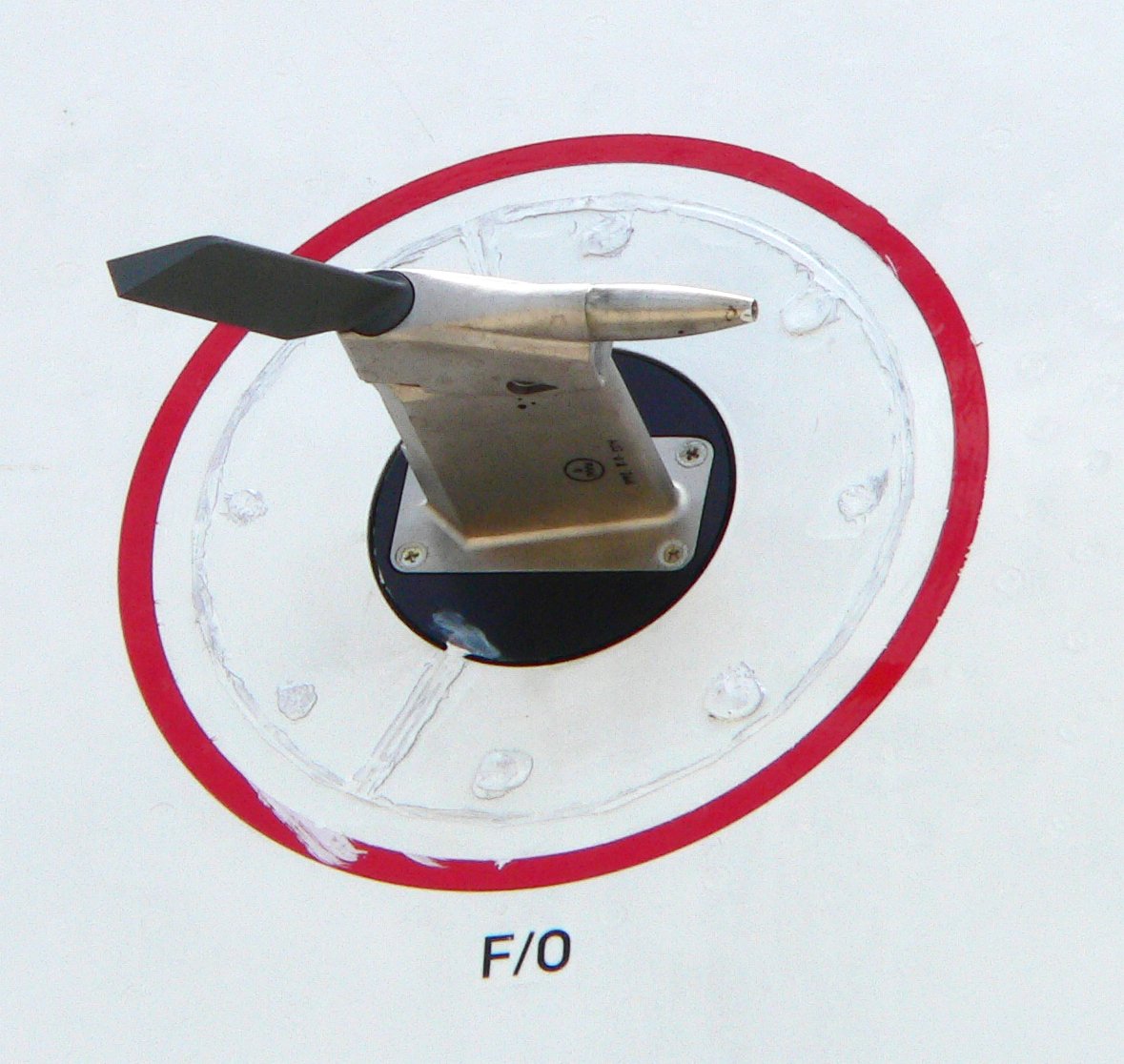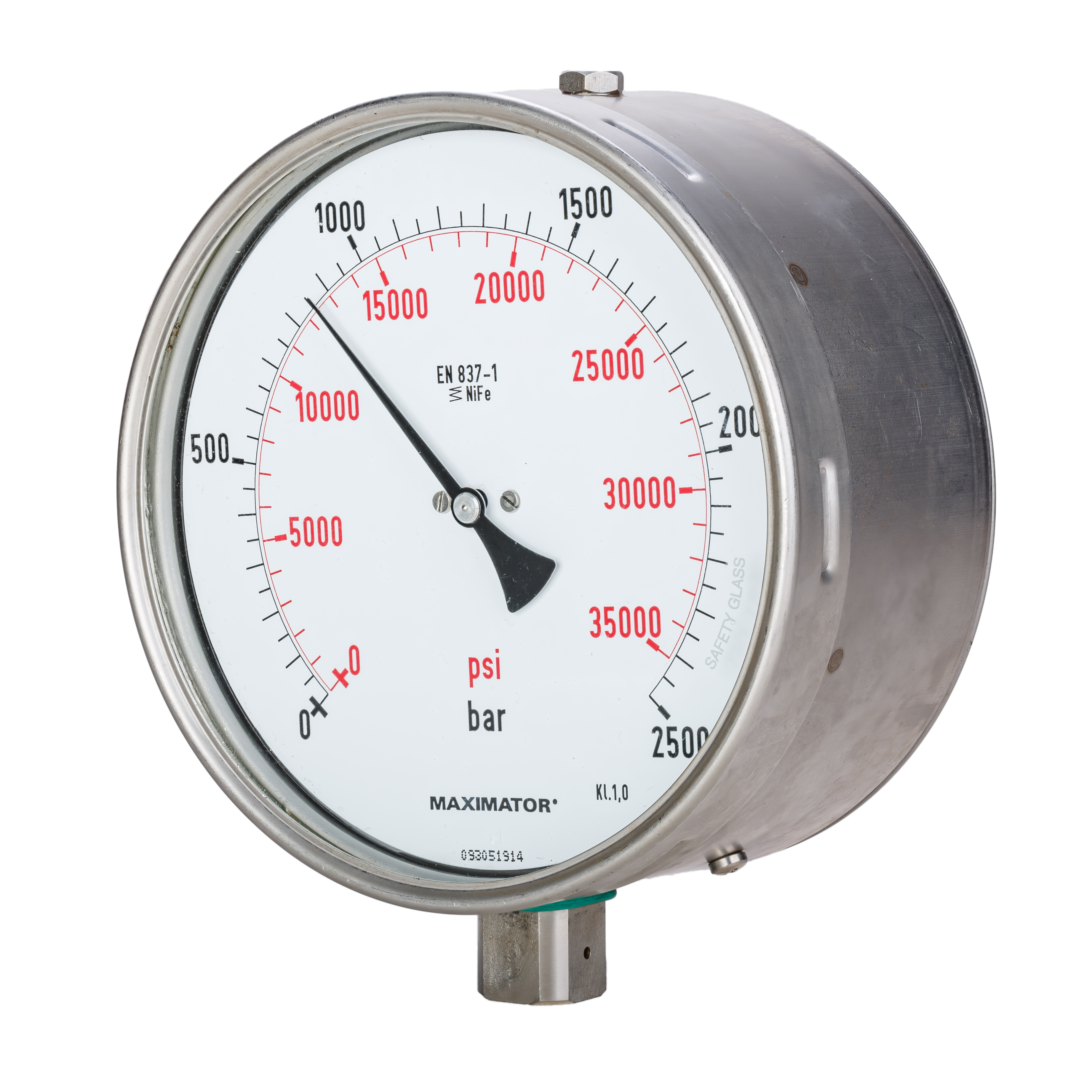|
Pitot Tube
A pitot ( ) tube (pitot probe) measures fluid flow velocity. It was invented by a French engineer, Henri Pitot, in the early 18th century, and was modified to its modern form in the mid-19th century by a French scientist, Henry Darcy. It is widely used to determine the airspeed of aircraft; the water speed of boats; and the flow velocity of liquids, air, and gases in industry. Theory of operation The basic pitot tube consists of a tube pointing directly into the fluid flow. As this tube contains fluid, a pressure can be measured; the moving fluid is brought to rest (stagnates) as there is no outlet to allow flow to continue. This pressure is the stagnation pressure of the fluid, also known as the total pressure or (particularly in aviation) the pitot pressure. The measured stagnation pressure cannot itself be used to determine the fluid flow velocity (airspeed in aviation). However, Bernoulli's equation states: :Stagnation pressure = static pressure + dynamic pressure ... [...More Info...] [...Related Items...] OR: [Wikipedia] [Google] [Baidu] |
Indicated Airspeed
Indicated airspeed (IAS) is the airspeed of an aircraft as measured by its pitot-static system and displayed by the airspeed indicator (ASI). This is the pilots' primary airspeed reference. This value is not corrected for installation error, instrument error, or the actual encountered air density, being instead calibrated to always reflect the adiabatic compressible flow of the International Standard Atmosphere at sea level. It uses the difference between total pressure and static pressure, provided by the system, to either mechanically or electronically measure dynamic pressure. The dynamic pressure includes terms for both density and airspeed. Since the airspeed indicator cannot know the density, it is by design calibrated to assume the sea level standard atmospheric density when calculating airspeed. Since the actual density will vary considerably from this assumed value as the aircraft changes altitude, IAS varies considerably from true airspeed (TAS), the relative vel ... [...More Info...] [...Related Items...] OR: [Wikipedia] [Google] [Baidu] |
Airspeed P1230157
In aviation, airspeed is the speed of an aircraft relative to the air. Among the common conventions for qualifying airspeed are: * Indicated airspeed ("IAS"), what is read on an airspeed gauge connected to a Pitot-static system; * Calibrated airspeed ("CAS"), indicated airspeed adjusted for pitot system position and installation error; * Equivalent airspeed ("EAS"), calibrated airspeed adjusted for compressibility effects; * True airspeed ("TAS"), equivalent airspeed adjusted for air density, and is also the speed of the aircraft through the air in which it is flying. Calibrated airspeed is typically within a few knots of indicated airspeed, while equivalent airspeed decreases slightly from CAS as aircraft altitude increases or at high speeds. With EAS constant, true airspeed increases as aircraft altitude increases. This is because air density decreases with higher altitude. The measurement and indication of airspeed is ordinarily accomplished on board an aircraft by an air ... [...More Info...] [...Related Items...] OR: [Wikipedia] [Google] [Baidu] |
Compressibility
In thermodynamics and fluid mechanics, the compressibility (also known as the coefficient of compressibility or, if the temperature is held constant, the isothermal compressibility) is a measure of the instantaneous relative volume change of a fluid or solid as a response to a pressure (or mean stress) change. In its simple form, the compressibility \kappa (denoted in some fields) may be expressed as :\beta =-\frac\frac, where is volume and is pressure. The choice to define compressibility as the negative of the fraction makes compressibility positive in the (usual) case that an increase in pressure induces a reduction in volume. The reciprocal of compressibility at fixed temperature is called the isothermal bulk modulus. Definition The specification above is incomplete, because for any object or system the magnitude of the compressibility depends strongly on whether the process is isentropic or isothermal. Accordingly, isothermal compressibility is defined: :\beta_T ... [...More Info...] [...Related Items...] OR: [Wikipedia] [Google] [Baidu] |
Northwest Airlines Flight 6231
Northwest Orient Airlines Flight 6231 was the fatal crash of a Boeing 727 on December 1, 1974 in Harriman State Park near Stony Point, New York, just north of the New York City area. The Northwest Airlines 727 had been chartered to pick up the Baltimore Colts professional football team in Buffalo in western New York. All three crew members on board died when the aircraft struck the ground following a stall and rapid descent caused by the crew's reaction to erroneous airspeed readings caused by atmospheric icing. The icing occurred due to failure to turn on the pitot tube heating at the start of the flight. This was one of two Boeing 727s to crash in the United States that day; the other was TWA Flight 514 in northern Virginia, northwest of Dulles airport (250 miles to the southeast). Accident The flight was chartered to pick up the Baltimore Colts in Buffalo after the aircraft originally earmarked to transport the team was grounded by a snowstorm in Detroit. The Boeing 7 ... [...More Info...] [...Related Items...] OR: [Wikipedia] [Google] [Baidu] |
Austral Líneas Aéreas Flight 2553
Austral Líneas Aéreas Flight 2553 was an Argentinian domestic scheduled Posadas–Buenos Aires service operated with a McDonnell Douglas DC-9-32 that crashed on the lands of Estancia Magallanes, Nuevo Berlín, away from Fray Bentos, Uruguay, on 10 October 1997. All 74 passengers and crew died upon impact. The accident remains the deadliest in Uruguayan history. Aircraft and crew The aircraft involved in the accident was a McDonnell Douglas DC-9-32, registration LV-WEG. It had its maiden flight in 1969, and was 28 years old at the time of the accident. It had previously operated for Iberia with registration EC-BQT, and it was transferred to the airline in 1993 after the buyout of the company by the Spanish carrier. The captain was 40-year-old Jorge Cécere, who had been with the airline since 1989 and logged 9,238 hours, including 223 hours on the DC-9. The first officer was Horacio Núñez, who was also 40. He had been with the airline since 1993 and had 2,910 flight ... [...More Info...] [...Related Items...] OR: [Wikipedia] [Google] [Baidu] |
Vertical Speed Indicator
In aviation, a variometer – also known as a rate of climb and descent indicator (RCDI), rate-of-climb indicator, vertical speed indicator (VSI), or vertical velocity indicator (VVI) – is one of the flight instruments in an aircraft used to inform the pilot of the rate of descent or climb.Federal Aviation Administration, ''Glider Flying Handbook'', Skyhorse Publishing Inc., 2007 pages 4-7 and 4-8 It can be calibrated in metres per second, feet per minute (1 ft/min = 0.00508 m/s) or knots (1 kn ≈ 0.514 m/s), depending on country and type of aircraft. It is typically connected to the aircraft's external static pressure source. In powered flight, the pilot makes frequent use of the VSI to ascertain that level flight is being maintained, especially during turning maneuvers. In gliding, the instrument is used almost continuously during normal flight, often with an audible output, to inform the pilot of rising or sinking air. It is usual for gliders to be ... [...More Info...] [...Related Items...] OR: [Wikipedia] [Google] [Baidu] |
Altitude
Altitude or height (also sometimes known as depth) is a distance measurement, usually in the vertical or "up" direction, between a reference datum and a point or object. The exact definition and reference datum varies according to the context (e.g., aviation, geometry, geographical survey, sport, or atmospheric pressure). Although the term ''altitude'' is commonly used to mean the height above sea level of a location, in geography the term elevation is often preferred for this usage. Vertical distance measurements in the "down" direction are commonly referred to as depth. In aviation In aviation, the term altitude can have several meanings, and is always qualified by explicitly adding a modifier (e.g. "true altitude"), or implicitly through the context of the communication. Parties exchanging altitude information must be clear which definition is being used. Aviation altitude is measured using either mean sea level (MSL) or local ground level (above ground leve ... [...More Info...] [...Related Items...] OR: [Wikipedia] [Google] [Baidu] |
Mach Number
Mach number (M or Ma) (; ) is a dimensionless quantity in fluid dynamics representing the ratio of flow velocity past a boundary to the local speed of sound. It is named after the Moravian physicist and philosopher Ernst Mach. : \mathrm = \frac, where: : is the local Mach number, : is the local flow velocity with respect to the boundaries (either internal, such as an object immersed in the flow, or external, like a channel), and : is the speed of sound in the medium, which in air varies with the square root of the thermodynamic temperature. By definition, at Mach1, the local flow velocity is equal to the speed of sound. At Mach0.65, is 65% of the speed of sound (subsonic), and, at Mach1.35, is 35% faster than the speed of sound (supersonic). Pilots of high-altitude aerospace vehicles use flight Mach number to express a vehicle's true airspeed, but the flow field around a vehicle varies in three dimensions, with corresponding variations in local Mach number. The loc ... [...More Info...] [...Related Items...] OR: [Wikipedia] [Google] [Baidu] |
System
A system is a group of interacting or interrelated elements that act according to a set of rules to form a unified whole. A system, surrounded and influenced by its environment, is described by its boundaries, structure and purpose and expressed in its functioning. Systems are the subjects of study of systems theory and other systems sciences. Systems have several common properties and characteristics, including structure, function(s), behavior and interconnectivity. Etymology The term ''system'' comes from the Latin word ''systēma'', in turn from Greek ''systēma'': "whole concept made of several parts or members, system", literary "composition"."σύστημα" Henry George Liddell, Robert Scott, '' [...More Info...] [...Related Items...] OR: [Wikipedia] [Google] [Baidu] |
Standard Gravity
The standard acceleration due to gravity (or standard acceleration of free fall), sometimes abbreviated as standard gravity, usually denoted by or , is the nominal gravitational acceleration of an object in a vacuum near the surface of the Earth. It is defined by standard as . This value was established by the 3rd CGPM (1901, CR 70) and used to define the standard weight of an object as the product of its mass and this nominal acceleration. The acceleration of a body near the surface of the Earth is due to the combined effects of gravity and centrifugal acceleration from the rotation of the Earth (but the latter is small enough to be negligible for most purposes); the total (the apparent gravity) is about 0.5% greater at the poles than at the Equator. Although the symbol is sometimes used for standard gravity, (without a suffix) can also mean the local acceleration due to local gravity and centrifugal acceleration, which varies depending on one's position on Earth (see Ear ... [...More Info...] [...Related Items...] OR: [Wikipedia] [Google] [Baidu] |
Manometer
Pressure measurement is the measurement of an applied force by a fluid (liquid or gas) on a surface. Pressure is typically measured in units of force per unit of surface area. Many techniques have been developed for the measurement of pressure and vacuum. Instruments used to measure and display pressure mechanically are called pressure gauges, vacuum gauges or compound gauges (vacuum & pressure). The widely used Bourdon gauge is a mechanical device, which both measures and indicates and is probably the best known type of gauge. A vacuum gauge is used to measure pressures lower than the ambient atmospheric pressure, which is set as the zero point, in negative values (for instance, −1 bar or −760 mmHg equals total vacuum). Most gauges measure pressure relative to atmospheric pressure as the zero point, so this form of reading is simply referred to as "gauge pressure". However, anything greater than total vacuum is technically a form of pressure. For very low pres ... [...More Info...] [...Related Items...] OR: [Wikipedia] [Google] [Baidu] |
Prandtl
Ludwig Prandtl (4 February 1875 – 15 August 1953) was a German fluid dynamicist, physicist and aerospace scientist. He was a pioneer in the development of rigorous systematic mathematical analyses which he used for underlying the science of aerodynamics, which have come to form the basis of the applied science of aeronautical engineering. In the 1920s he developed the mathematical basis for the fundamental principles of subsonic aerodynamics in particular; and in general up to and including transonic velocities. His studies identified the boundary layer, thin-airfoils, and lifting-line theories. The Prandtl number was named after him. Early years Prandtl was born in Freising, near Munich, in 1875. His mother suffered from a lengthy illness and, as a result, Ludwig spent more time with his father, a professor of engineering. His father also encouraged him to observe nature and think about his observations. He entered the Technische Hochschule Munich in 1894 and graduated wi ... [...More Info...] [...Related Items...] OR: [Wikipedia] [Google] [Baidu] |




.jpg)

